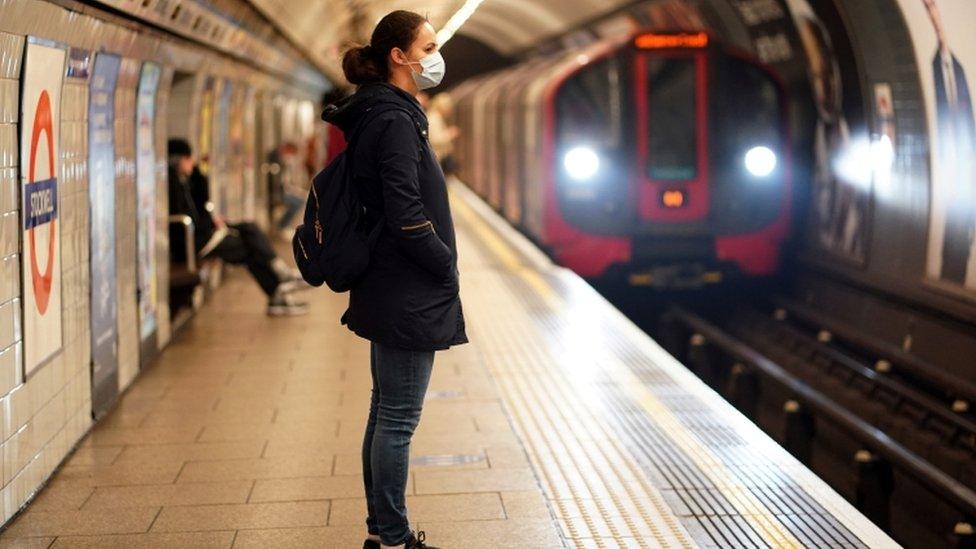What happened to transport in London in 2020?
- Published
- comments
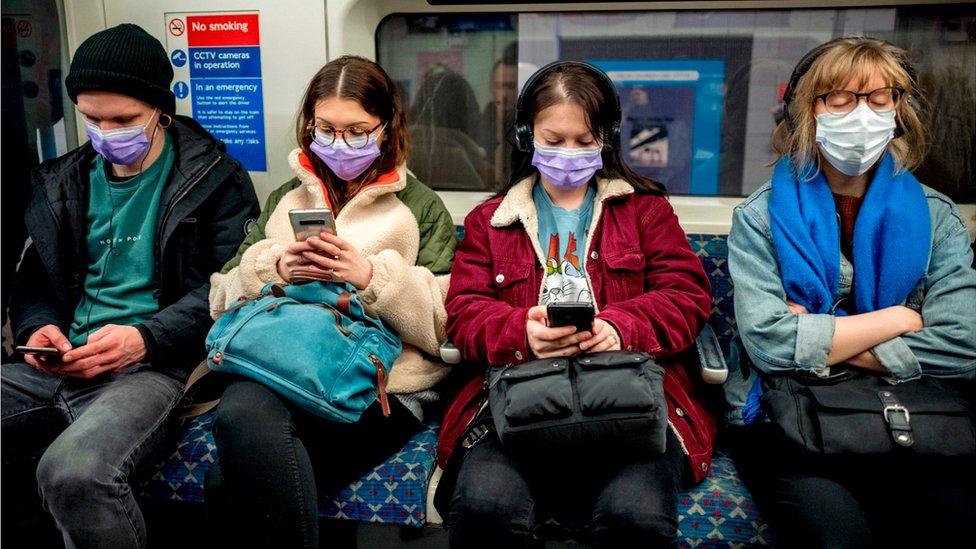
Busy services have meant it is impossible at times for people to be two metres away from others
Well … where do you start in what has been the most bewildering year? This is my attempt. As ever it is not definitive.
First of all, I would like to pay tribute to all those transport workers who lost their lives to Covid.
I have spoken to many of the families and there is still anger at what happened particularly around the lack of PPE, screens and washing facilities back in March.
Many families still want answers and a full public inquiry into what they feel was a lack of protection at work.
It is worth remembering transport workers are crucial, key workers and as a society we owe them a debt of gratitude for keeping our systems running.
Passengers disappear
Standing in deserted King's Cross station on 13 March was like being in the opening scene of a horror film.
There was just me, the cameraman, a security guard and a rough sleeper in the whole station.
And that became the big theme for transport as passengers deserted the system.

People were told to work from home if possible and avoid non-essential travel in order to reduce the impact of the pandemic
The government's advice initially was not to travel, which changed slightly through the year. But there is no doubt confidence has taken a huge knock.
All of which has had massive implications for the whole sector: train and bus companies, Transport for London (TfL), taxis, minicabs and the aviation industry.
And there have been many job losses. I have spoken to airline pilots now applying to do deliveries for supermarkets and cabbies now driving HGVs.
TfL has been to the government twice for more money, and looking forward to how it is funded without relying on fares will be the big challenge in 2021.
TfL is due to outline its proposals in January and London Mayor Sadiq Khan will have to look at new revenue streams to balance the books, such as his proposal proposal to charge non-Londoners £3.50 a day to drive into greater London.
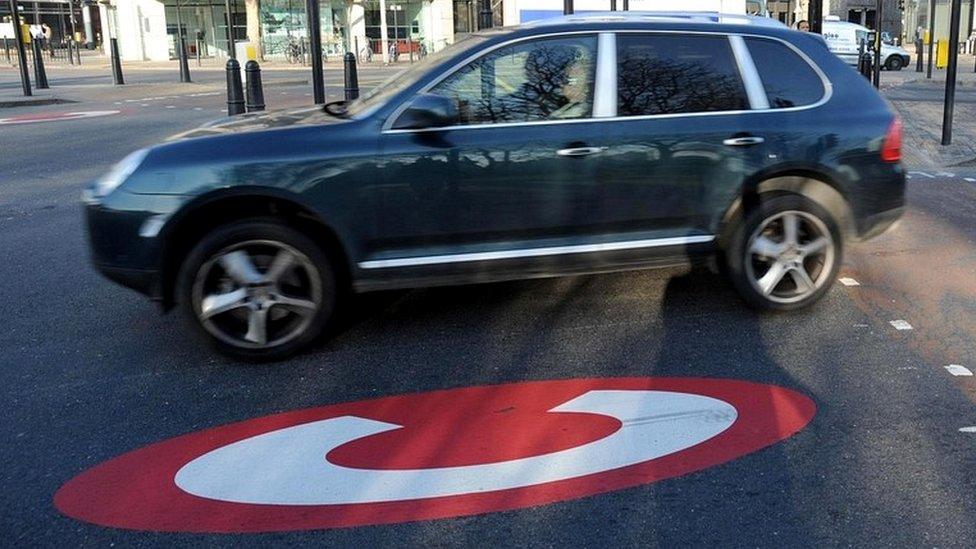
The government has called for the congestion charge zone to be expanded as part of a new bailout
The government is now paying the rail companies to run very empty trains and many worry about how long that is sustainable for.
And there are questions around what this does to future infrastructure, with even the most optimistic experts thinking it could take years for passengers numbers to return - even with a vaccine.
Which brings into focus how HS2 and a third runway at Heathrow would fare in a world where people might travel much less?
Redesigning streets
Another change, also precipitated due to the pandemic, was the emphasis put on walking and cycling.
In the first lockdown many enjoyed the cleaner air, with some saying their asthma disappeared.
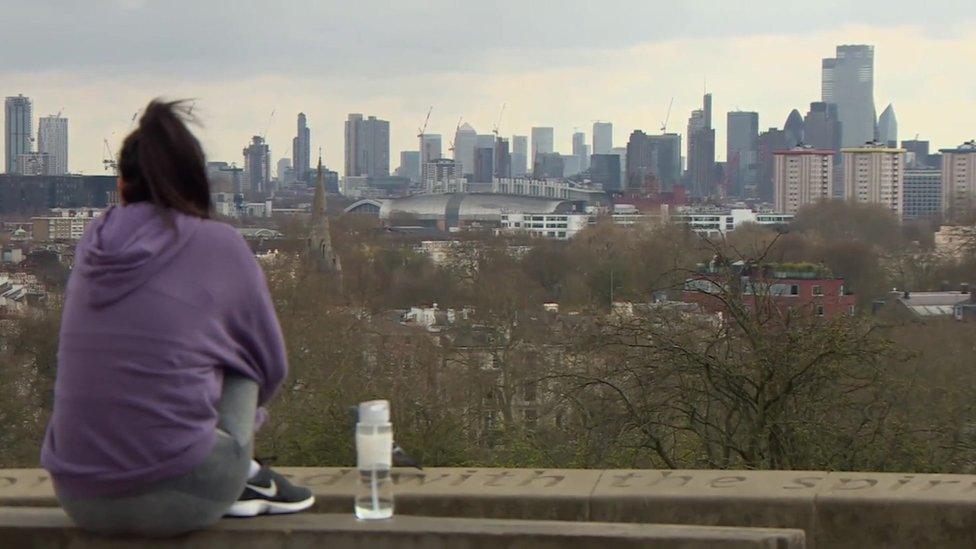
Views of London on lockdown and unhindered by smog
Downing Street wanted more streets to have less traffic and so came the introduction of Low Traffic Neighbourhoods (LTNs).
Many councils blocked off some residential streets in London to motor traffic with planters, using funding from central government.
They wanted to stop through traffic on residential streets and reduce pollution and this was probably the most contentious transport issue in London in the summer.
Once when I was out filming, a white van driver launched into a tirade about how stupid the new roadblocks were.
He drove off and moments later a family came over and said how much they loved them.
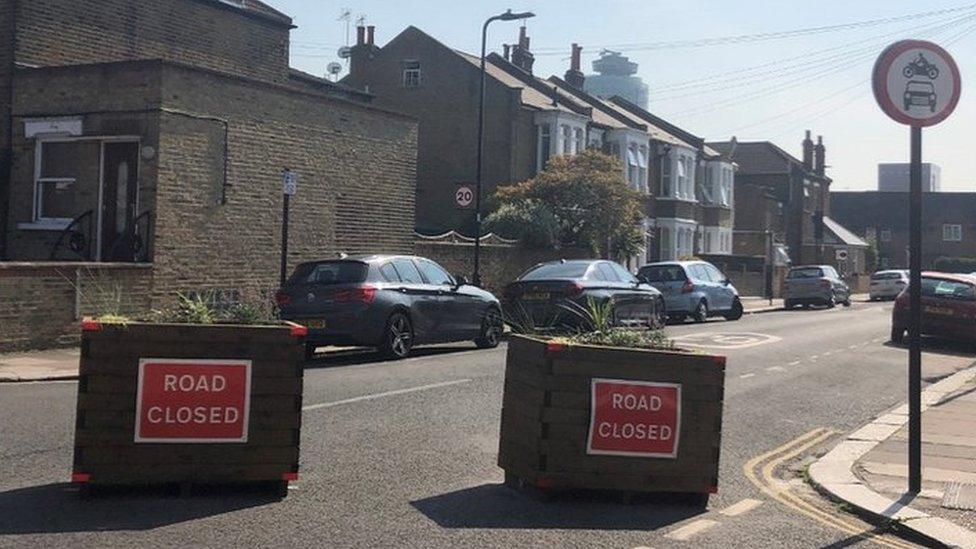
LTNs use planters to stop through traffic
So while many loved the quiet, non-polluted streets they created, others didn't like them as it made their journeys longer.
And those who lived on the edge of the LTNs said it made the traffic worse there.
The lack of consultation also annoyed many, so some were scrapped, some changed and some have stayed. Sometimes local politics played a part.
The fundamental broader issue is, there are too many car journeys now being made in cities creating congestion and pollution and authorities across the world are struggling to deal with it.
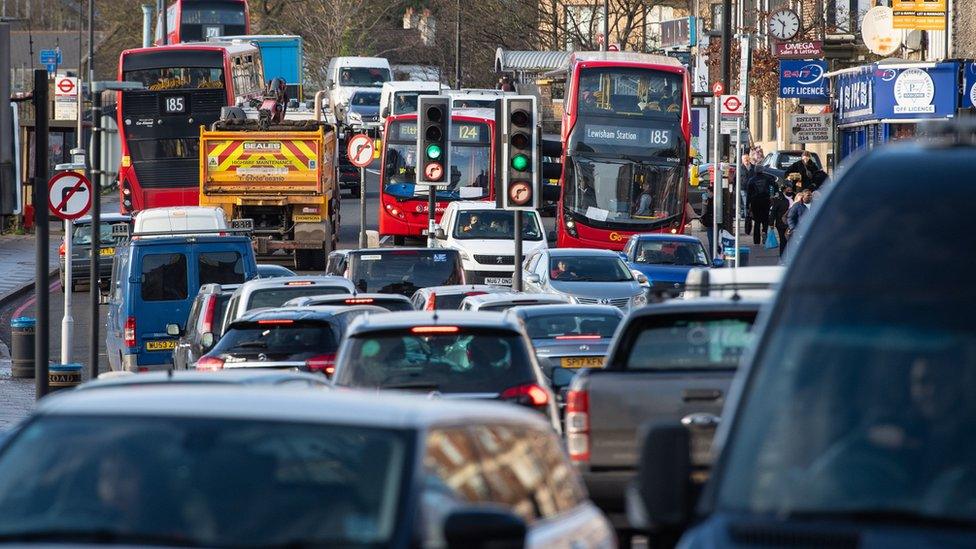
Traffic in London leads to poor air quality
The status quo isn't a viable position for pollution levels and dealing with poor air quality will be one of the themes of 2021, where the wider Ultra-Low Emission Zone (ULEZ), external is set to be introduced in October.
The zone, introduced in April, covers the same area as the Congestion Charge; vehicles must meet low emission standards, or pay £12.50 per day to enter the area.
The mayor plans to expand the ULEZ out to the North and South Circular roads in October 2021.
People generally want less pollution and less congestion - until it actually affects them directly and, for example, they have to pay.
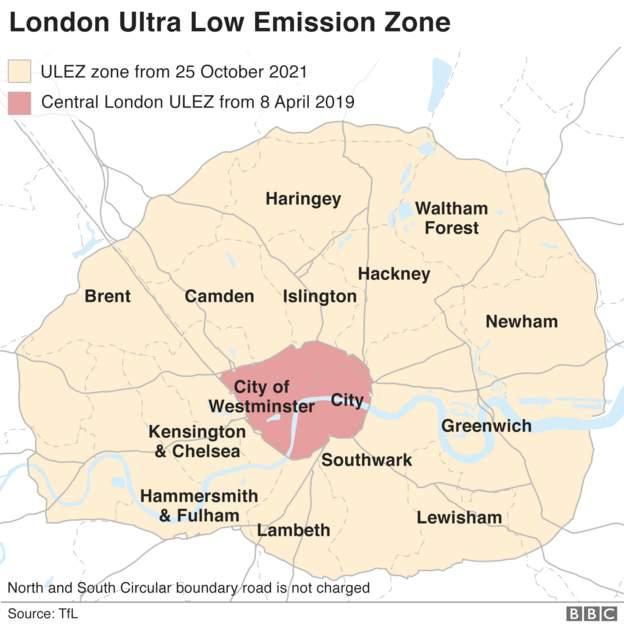
So what does the future hold?
Well, people won't be cramming into the armpit of a fellow passenger for some time and the rise of home and flexible working seems to be here to stay - in some form at least.
Early on in the pandemic there were the usual jibes about people "working from home" having it easy.
Those have now disappeared and the phrase you hear more is "living at work".
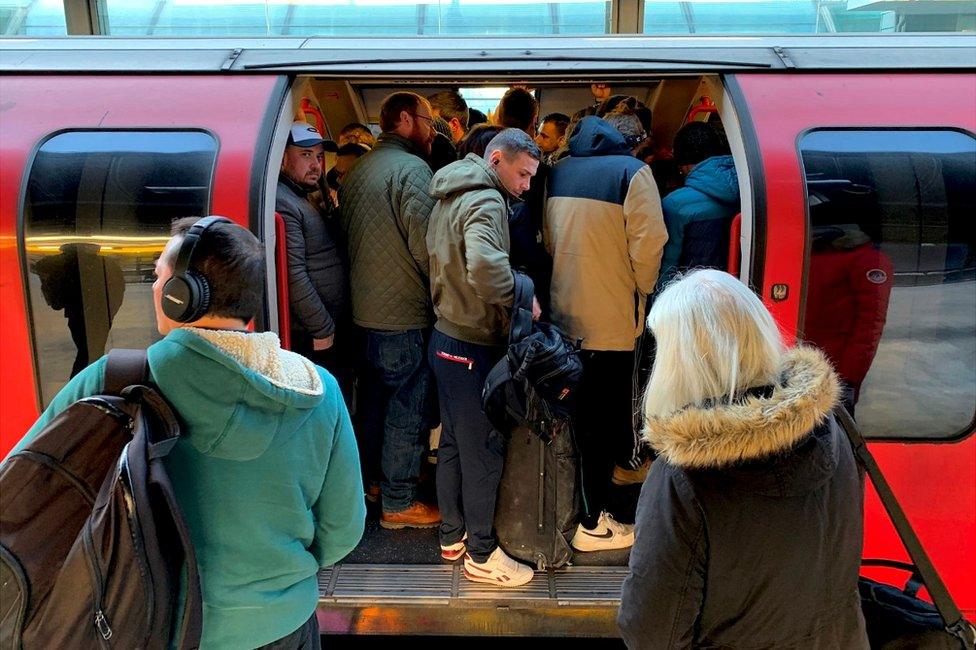
Is the crowded commute a thing of the past?
Flexible ticketing for the new breed of part-time hybrid commuter will be part of the future.
And of course there is a mayoral election to look forward in 2021 and they always throw up new policies and ideas. But I'd have thought they will be constrained somewhat by TfL's finances.
There are no doubt unprecedented challenges facing transport and the environment next year.
To all the readers of my blog, I wish you a safe and prosperous 2021.
- Published25 March 2020
- Published1 November 2020
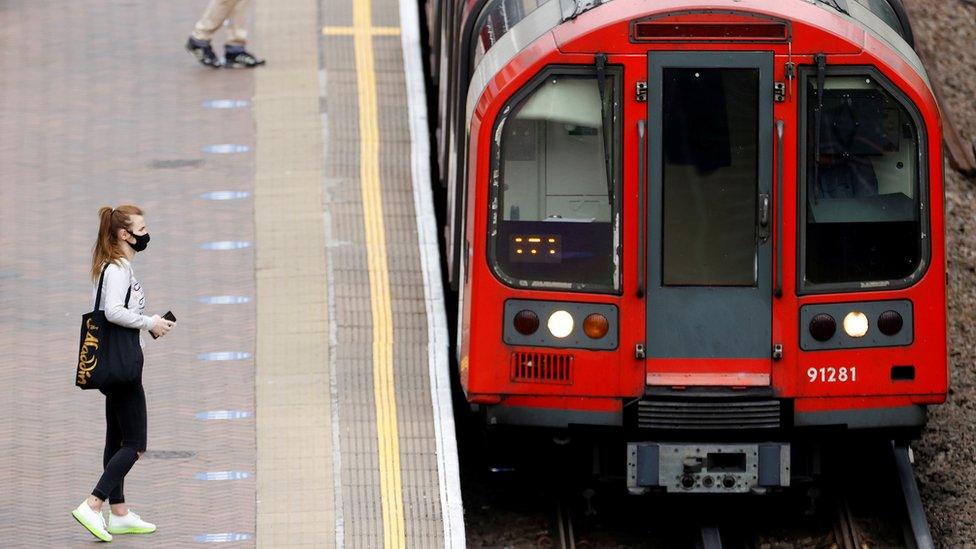
- Published27 October 2020
